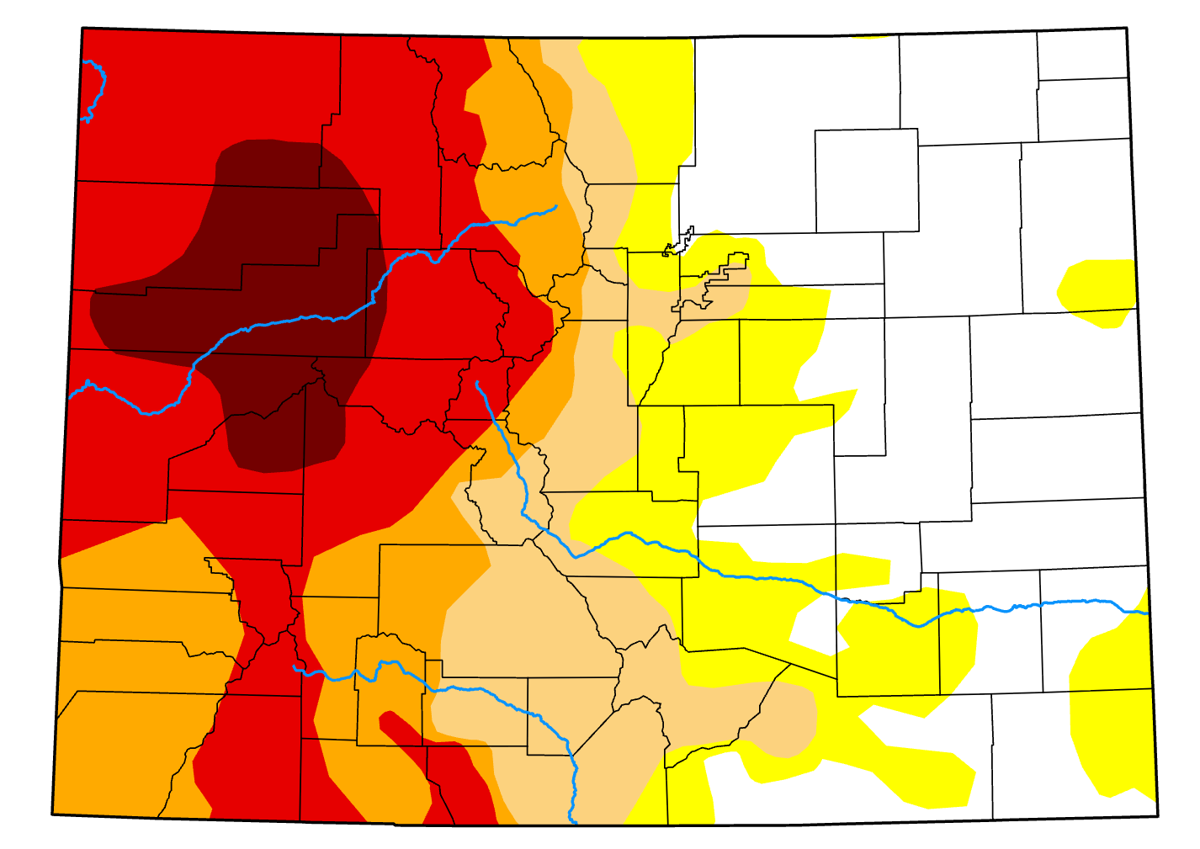94% of Colorado county at most severe level of drought, known for dust storms and economic loss
A portion of Colorado has entered into the most severe stage of dryness that’s measured by the U.S. Drought Monitor, at a threshold that hasn’t been seen since July of 2021. This level of dryness exceeds a tier in which insect infestations, fish kills, and large fires start to occur, and enters into a situation where dust storms can become widespread, along with major financial losses in agricultural and recreation industries.
The United States Drought Monitor judges drought on four tiers, also monitoring a preliminary stage in which abnormal dryness is present. Per an August 21 report, about 70 percent of the state is abnormally dry or worse, with about 54 percent of the state falling into a technical tier of drought. It’s not too uncommon for these levels of dryness to be reached, but a state map depicting dryness by location shows that these numbers don’t tell the entire story.
With a large swath of land in the Eastern Plains that’s having no issues with dryness, the majority of the Western Slope is at the third tier of drought – ‘extreme drought’ – or worse, with seven percent of the state’s land now at the fourth and final tier of drought – ‘exceptional drought.’ It’s particularly bad in the northwest corner of the state, too – take Garfield County, for example, with 94 percent of this county experiencing that fourth tier of ‘exceptional drought.’ Meanwhile, close to the entirety of the northwest quadrant of Colorado is at that third stage of drought or worse.
With most Coloradans living on the Front Range where summer has brought plenty of afternoon rainstorms this year, this moisture disparity may be a bit difficult to comprehend for some Front Rangers. Most Coloradans would probably believe ‘it’s been a rainy year,’ while for those out west, that’s been far from the case.
When ‘exceptional drought’ started to creep up in October of 2020 – the last time this much of the state was at this tier, the state wasn’t free of this tier of drought until November of 2021. This is just one example, but it shows how once a more intense level of drought is reached, it can stick around for quite some time with long-lasting impacts.
There’s no doubt about it – the drought situation will be something to monitor in Colorado for months to come. Find more data here.
Get OutThere
Signup today for free and be the first to get notified on new updates.





